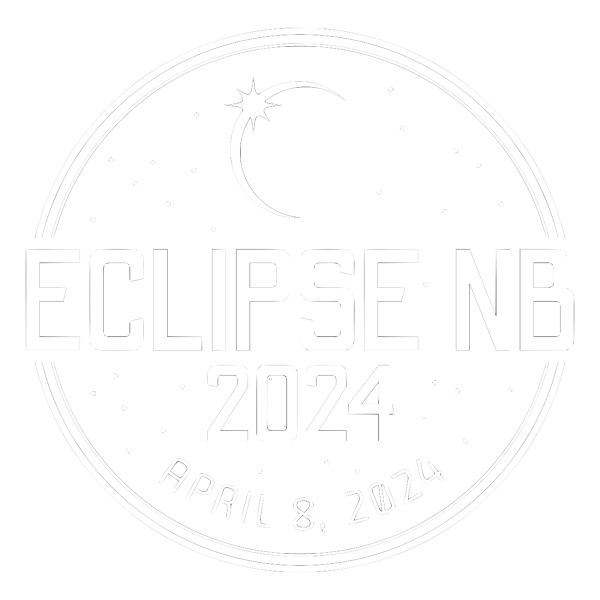On April 8, 2024, central New Brunswick will be traversed by a total solar eclipse. The last time this phenomenon occurred in central New Brunswick was more than 1000 years ago! Eastern Canada will not have another chance to see a total solar eclipse until 2079.
At eclipse2024.org there is extensive information about the total solar eclipse in North America April 8, 2024. Enter “Florenceville-Bristol” or "Woodstock NB" in the search box where it says “search for a city” to find information about the circumstances of the eclipse in those towns, including an eclipse simulator showing what it will look like.
At eclipse2024.org there is extensive information about the total solar eclipse in North America April 8, 2024. Enter “Florenceville-Bristol” or "Woodstock NB" in the search box where it says “search for a city” to find information about the circumstances of the eclipse in those towns, including an eclipse simulator showing what it will look like.
MORE ABOUT TOTAL SOLAR ECLIPSES
Animation of a solar eclipse. Credit: NASA
A solar eclipse happens when our Moon passes between the Sun and Earth, completely or partially blocking the face of the Sun. Total eclipses are especially dramatic, and most people seldom—if ever—have a chance to see one.
People viewing the eclipse from locations where the moon’s shadow completely covers the Sun—known as the path of totality—will experience a total solar eclipse. The sky will become dark, as if it were dawn or dusk. Very odd things will happen. Cows will get confused; they'll turn around and head home for shelter in the middle of the day, thinking it is nighttime. Birds will stop chirping, as though the day has ended. The experience is literally marvellous, maybe a bit eerie.
As for how rare a total solar eclipse is: Total solar eclipses occur every one or two years, on average. Because solar eclipses are visible from such a small area on Earth each time, the chance of observing one from any single spot is less than once in a lifetime.
Total solar eclipses are only visible on Earth because of an astonishing coincidence: The Moon's diameter and distance from Earth make its relative size just big enough to cover the Sun's disk. If the Moon were any smaller or farther away, we would see only partial eclipses.
MORE ABOUT TOTAL SOLAR ECLIPSES
Animation of a solar eclipse. Credit: NASA
A solar eclipse happens when our Moon passes between the Sun and Earth, completely or partially blocking the face of the sun. Total eclipses are especially dramatic, and most people seldom—if ever—have a chance to see one.
People viewing the eclipse from locations where the moon’s shadow completely covers the Sun—known as the path of totality—will experience a total solar eclipse. The sky will become dark, as if it were dawn or dusk. Very odd things will happen. Cows will get confused; they'll turn around and head home for shelter in the middle of the day, thinking it is nighttime. Birds will stop chirping, as though the day has ended. The experience is literally marvellous, maybe a bit eerie.
As for how rare a total solar eclipse is: Total solar eclipses occur every one or two years, on average. Because solar eclipses are visible from such a small area on Earth each time, the chance of observing one from any single spot is less than once in a lifetime.
Total solar eclipses are only visible on Earth because of an astonishing coincidence: The Moon's diameter and distance from Earth make its relative size just big enough to cover the Sun's disk. If the Moon were any smaller or farther away, we would see only partial eclipses.
Top
- ../../resources/astronomy-1867616_1280.jpg










